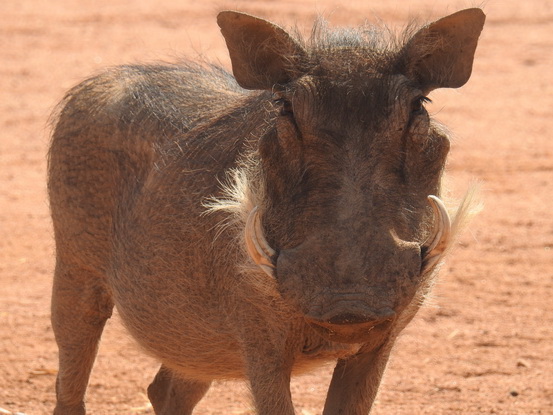 Safaris
Bergsteigen
Wandern
Inselwandern Weltweit
Safaris
Bergsteigen
Wandern
Inselwandern Weltweit
 Europa
Inselwandern
Europa
Inselwandern
 Städtewandern
Städtewandern
 Paintings
Paintings Dirk Rauschenbach
Dirk Rauschenbach
 Safaris
Bergsteigen
Wandern
Inselwandern Weltweit
Safaris
Bergsteigen
Wandern
Inselwandern Weltweit
|
 Europa
Inselwandern
Europa
Inselwandern
|
 Städtewandern
Städtewandern
|
 Paintings
Paintings |
 Dirk Rauschenbach
Dirk Rauschenbach
|
|
Back Namibia Overview back Erindi Ondekaremba Swakop Wuestenquell Biltong
|
|
|
| Antilopen Antilope SteppenZebra | SteppenZebra |
|
|
|
| Antilopen Antilope BergZebra | Zebra |
|
|
|
| Antilopen Antilope Zebra | MountainZebra |
|
|
|
| Mountain Zebra | MountainZebra MountainsZebra Bergzebra |
| Antilopen Antilope Zebra |
 |
Das Bergzebra ist wirklich ein Symbol Afrikas. Die Art wird wegen ihrer erstaunlichen Kletterfähigkeit so genannt, die es ihr ermöglicht, steile, zerklüftete Oberflächen leicht zu erobern. Dieses Huftier hat deutlich härtere und spitzere Hufe entwickelt als andere Pferdearten. Dies ist eine der bekanntesten und leicht erkennbaren Arten der Pferdefamilie. Der Körper dieses Tieres ist mit schwarzen und weißen Streifen bedeckt. Die Mähne ist kurz und gerade. Ein weiteres charakteristisches Merkmal dieser Art ist das "Gittereisen", schmale Streifen, die durch ihren Rumpf verlaufen. Zusätzlich besitzen die Bergzebras eine sogenannte "Wamme" - ein dünnes Stück Haut am Hals. Bei Männern ist die Wamme auffälliger. Das Bergzebra von Hartmann (Equus zebra hartmannae) ist eine Unterart des Bergzebras, die im äußersten Südwesten Angolas und im Westen Namibias vorkommt. Hartmanns Bergzebras leben am liebsten in kleinen Gruppen von 7-12 Personen. Sie sind agile Kletterer und können in trockenen Bedingungen und steilem Bergland leben. |
| Pumba The
Steppenzebra (or Plains Zebra, Equus quagga) is one of Africa's most
recognizable and widespread zebra species. Known for its striking
black-and-white stripes and social behavior, the Plains Zebra is a
common sight in savannas, grasslands, and woodlands across Eastern and
Southern Africa, including Namibia. Here's everything you need to know
about this iconic animal: Physical Characteristics Stripes: The Plains Zebra is known for its bold black-and-white stripes, which are unique to each individual, much like human fingerprints. Size: They stand about 1.1–1.5 meters (3.6–4.9 feet) at the shoulder and weigh between 175–400 kg (385–880 lbs). Body Shape: They have a sturdy, horse-like build with a short, erect mane and a tufted tail. Striping Pattern: The stripes extend all the way down to their hooves and are broader than those of other zebra species, such as the Mountain Zebra. Habitat Plains Zebras are found in a variety of habitats, including savannas, grasslands, woodlands, and open plains. They are highly adaptable and can thrive in both arid and moist environments. In Namibia, they are commonly seen in Etosha National Park, Namib-Naukluft Park, and other wildlife reserves. Behavior Social Structure: Plains Zebras are highly social animals and live in stable family groups called harems, consisting of one stallion, several mares, and their young. Bachelor males may form separate groups or live solitarily until they can establish their own harem. Multiple harems often come together to form large herds, especially during migrations. Diet: Plains Zebras are primarily grazers, feeding on grasses, but they may also browse on leaves and shoots during the dry season. They are often seen grazing alongside other herbivores like wildebeest and antelopes, as they have different grazing preferences and help each other detect predators. Predators: Their main predators include lions, hyenas, leopards, and wild dogs. Zebras rely on their keen senses, speed (up to 65 km/h or 40 mph), and strong social bonds to evade predators. Reproduction Mating can occur year-round, but peaks during the rainy season when food is abundant. After a gestation period of about 12–13 months, the mare gives birth to a single foal. Foals can stand and run within an hour of birth and are weaned at around 7–11 months. Interesting Facts Stripes for Camouflage: The stripes are thought to confuse predators by creating an optical illusion, especially when the zebras move in a group. Social Grooming: Zebras often groom each other, which strengthens social bonds and helps remove parasites. Migratory Behavior: In some regions, Plains Zebras undertake long migrations in search of water and fresh grazing grounds, often alongside wildebeest. Plains Zebras in Namibia In Namibia, Plains Zebras are commonly found in Etosha National Park, where they gather around waterholes, especially during the dry season. They are also present in other protected areas and private game reserves. Namibia is also home to another zebra species, the Hartmann's Mountain Zebra, which is adapted to more arid and mountainous regions. Conservation Status The Plains Zebra is classified as Near Threatened by the IUCN due to habitat loss, competition with livestock, and hunting in some areas. However, their populations remain stable in many protected areas, including Namibia's national parks. The Plains Zebra is a symbol of Africa's wild beauty and a key species in its ecosystems. If you're visiting Namibia, don't miss the chance to see these magnificent animals in their natural habitat! |
Hartmanns Bergzebra SteppenZebra
Das Steppenzebra (Equus quagga), auch als Plains Zebra bekannt, ist eine der bekanntesten und am weitesten verbreiteten Zebraarten in Afrika. Es ist besonders für seine charakteristischen schwarzen und weißen Streifen bekannt und lebt hauptsächlich in den offenen Graslandschaften und Savannen Afrikas. Merkmale des Steppenzebras:
Verbreitung und Lebensraum:
Ernährung:
Soziales Verhalten:
Fortpflanzung:
Raubtiere:
Bedeutung im Ökosystem:
Gefährdung und Schutz:
Fazit:Das Steppenzebra ist ein faszinierendes, soziales und anpassungsfähiges Tier, das durch seine auffälligen Schwarz-Weiß-Streifen und seine Rolle als grazendes Herdentier eine wichtige Funktion im afrikanischen Ökosystem erfüllt. Es ist ein Symbol für die Vielfalt und den Reichtum der afrikanischen Wildnis und bleibt eine der am meisten bewunderten und ikonischen Antilopenarten des Kontinents. |
![]() 26.07.25 Copyright Dirk
Rauschenbach Koelnerstrasse 293 51702 Bergneustadt
Datenschutzerklaerung 02261 9788972 Mail ccooly(
at) web.de
26.07.25 Copyright Dirk
Rauschenbach Koelnerstrasse 293 51702 Bergneustadt
Datenschutzerklaerung 02261 9788972 Mail ccooly(
at) web.de